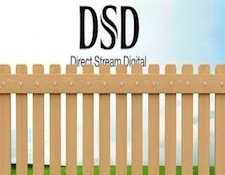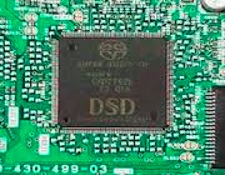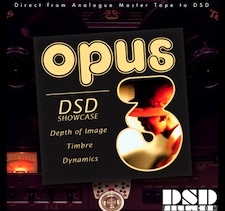It’s the time of year for saving money!

Let me make my own biases clear. I’m a big fan of the DSD (Direct Stream Digital) recording and playback format. I’ve been using a Korg MR-1000 DSD recorder since was first introduced for most live concert recordings. For my applications DSD is simply the highest fidelity two-channel recording format currently available.
But wait, there’s more. Not only is DSD the alpha format for location, documentary or live-to-tape recording engineers, but also ideal for archival mastering, especially when going from analog to digital. Many of the SACD reissues from Analog Productions were converted from analog to DSD by Gus Skinnas using the Sonoma DSD-based system. While this Sonoma isn’t the only analog tape to digital methodology (the PCM-based Plangenet process is another,) DSD is the most flexible in terms of conversion to other digital formats and bit-rates. Why? Because DSD can be converted to any PCM sample-rate with no decimation errors.

On the hardware side consumers can expect a steady stream of DSD-capable DACs coming from a wide variety of manufacturers. Why? Because the DAC chips from almost all the major suppliers of DAC circuits have DSD capabilities built-in to the chips. For the cost of a bit of software coding any consumer or pro DAC manufacturer can include DSD support in their feature sets. Since the cost of inclusion is so low, most DAC makers will choose to add DSD support. The field of dreams has fresh sod and new nighttime arc lights, but just because the stadium is built doesn’t mean “they” will come…
How successful will DSD be as a consumer format? Here the present and future get murkier. Obviously there are already some recording labels such as 2L, Opus 3 and Blue Coast Records who have DSD format recordings available via download. But despite these pioneering efforts I can’t see major retail outlets, such as Amazon or the iTunes Store embracing the DSD format. Heck, they can’t hardly even bring themselves to support lossless CD Redbook 44.1.
But here is hope. Several sites, including Analog Productions are in the process of looking into the prospect for DSD format music sales. Obviously having some “big titles” available in DSD will go a long ways toward raising DSD’s presence. But even Dylan and the Rolling Stones couldn’t turn SACD into a mainstream popular format, so I wouldn’t count on DSD ever being a replacement for CDs or even higher-resolution PCM.

Currently, unless a major shift occurs, I predict that DSD-format consumer recordings’ future looms as forever being primarily an audiophilecentric format. That isn’t a bad thing as long as the total number of audiophiles who support the format are sufficient so that the record companies that support the format can stay in business. I hope the numbers work out, but I suspect it may well be a squeeker as to whether DSD (as a consumer format) will be around ten years from now. I pretty confident that DSD will still be present in one form or another as a professional format, but for your average audiophile, DSD’s future is not so obvious.





